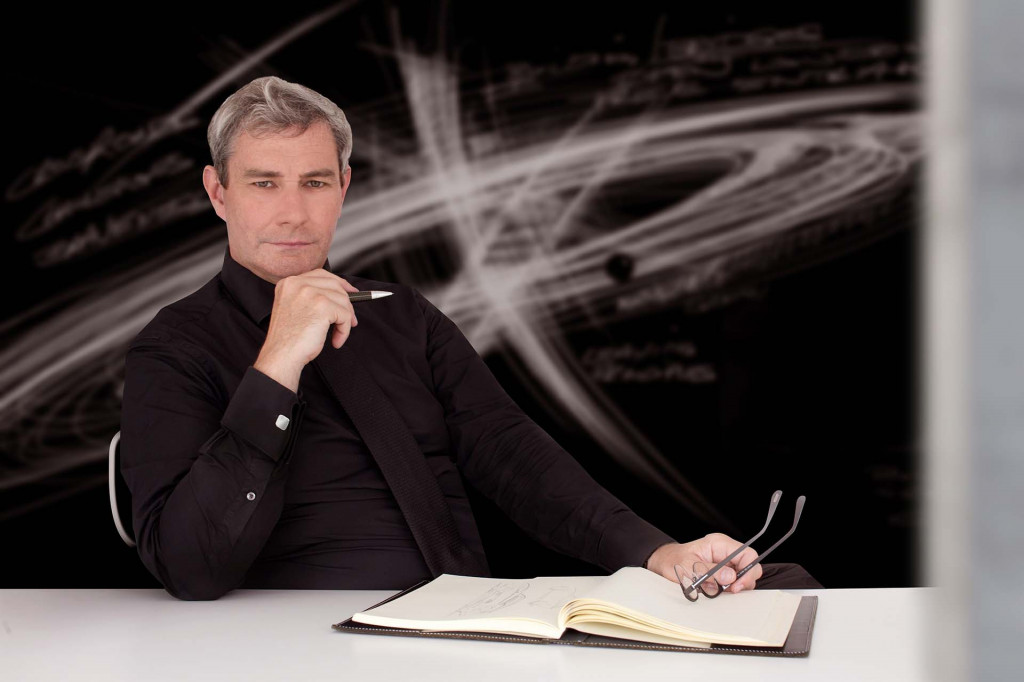
Luc Donckerwolke
Luc Donckerwolke is one of us.
The 53-year-old designer—born in South America, trained in Brussels, and chief designer for a South Korean global automaker—speaks with a soft French timbre that rises and falls mid-sentence. It makes every clause of every sentence sound like a playful question.
He smiles in a captivating way that erases the entourage of two, sometimes three, people that accompany him almost everywhere he goes.
Even in his office in South Korea, a glass nest perched high above a neutral-colored and softly lit cavern that doubles as Hyundai’s design dome, Donckerwolke’s big presence defies his soft approach. The people follow him around his office, too.
His attitude is grounded, even though his resume and experience read other-worldly.
Donckerwolke is only a few months into his tenure as Hyundai’s global design boss. It was a telegraphed ascension after Peter Schreyer, a name and concept—and glasses—that had become synonymous with Hyundai and Kia design like Ian Callum with Jaguar, Henrik Fisker with BMW. It’s no understatement to say that Schreyer was responsible for making Hyundai and Kia cars that people actually meant to buy.
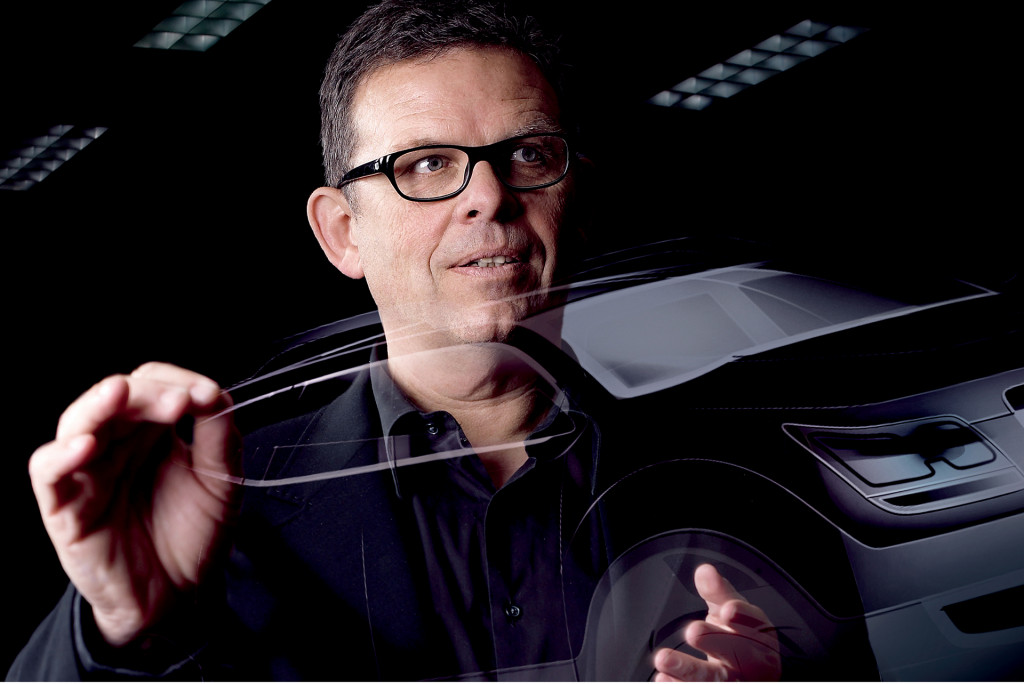
Peter Schreyer
Donckerwolke isn’t Schreyer. He doesn’t want to be.
He also doesn’t stray far from the picture you’d draw of the man who penned the Lamborghini Murcielago and Gallardo, and Bentley Flying Spur and EXP 10 Speed 6. He dons a crisp, dark blazer over a light-colored turtleneck sweater today—and in almost every picture available of him—and speaks in hushed tones.
Some of what he’s saying could come from our lips. Other ideas remind us that we’re talking to one of the most avant garde auto designers of the last 30 years.
———
“I have a big addiction with Porsche 911s,” he says. (Ed’s note: Same.)
Donckerwolke owns several generations of the cars and loves them, he says.
They represent to him the golden ring of design and his expression of what vehicles strive to be. “Pure breeds.” His eyes light and his smile widens. The uvular R’s in his French accent roll a little longer in both words.
His almighty concept of function in a “pure breed” has been formative in his career. Donckerwolke points to the 911, Jeep CJ-5, original Mini Cooper, and Citroen 2CV as unvarnished species. The Land Rover Range Rover, another automobile that he admits a fascination with, is one more.
“Before, the typology of the cars were clear: You had the sedans, the station wagons, you had coupes and then suddenly there’s this animal for off-road…that needed to become more civilized—the SUV,” he says.
The only thing civilized about the original Range Rover was its suspension, he said.
Where we go from there is where Donckerwolke’s soft talk, quiet smile, and charming intonation carry a big stick.
Back to 911s.
“The Singer is a perfect crossover…people want the flavor of the nostalgic 911, but they want the safety and the comfort from the 964 from the end of the 90s and of the 80s. And they want the performance of the 911 from 2010,” he says.
Needle scratch. Mic feedback. Jaws open. “Singer” and “crossover” travel in the same breath less often than “calm” and “Twitter.” Donckerwolke may have just created a new oxymoron.
Double-check the notes. Stop the tape. Ask again.
“Crossover?”
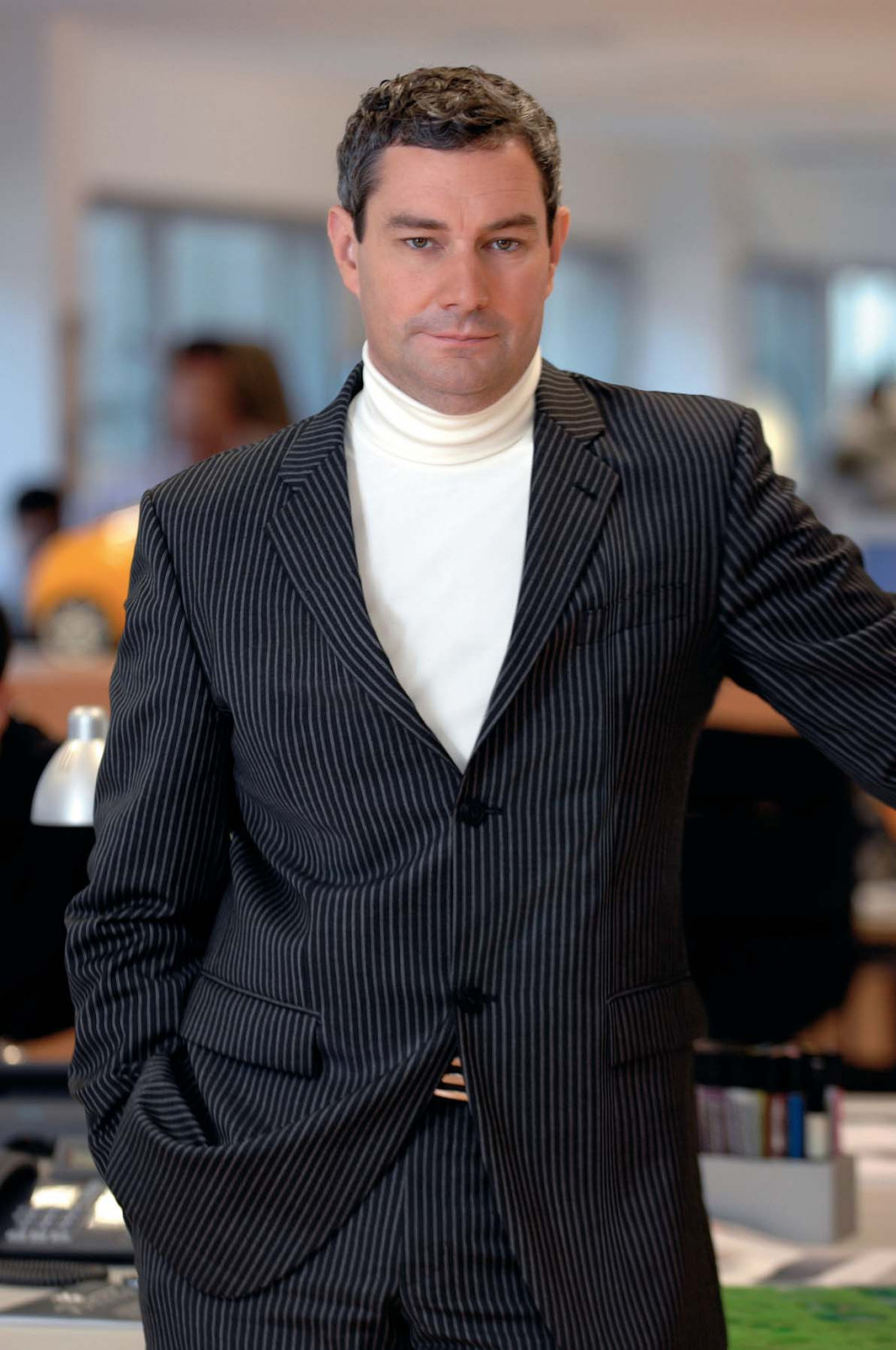
Luc Donckerwolke
“I mean crossover.”
We’re not arguing semantics. We’re not speaking the same language.
Donckerwolke’s crossover isn’t a tall-riding wagon. He’s aware of that definition. His definition of crossover is a genre-agnostic concept. My definition of crossover sparks less enthusiasm among gearheads than botulism.
He views the high-priced supercars reimagined by Singer as crossovers. The Range Rover is now a crossover. Even the brutally curvy, impractical, and uncompromising Genesis Essentia Concept that he helped design is a crossover.
When he looks for “pure breeds,” he finds compromise—not to be confused with compromised—and potential.
His latest, the 2020 Hyundai Palisade is a crossover in our sense the word. It’s a crossover in his sense of the word, too. But the two aren’t the same.
“I believe the crossover (genre, not concept) is the only way to combine the functionality that somebody needs, with emotion,” he says.
Emotion and crossovers aren’t foreign concepts from each other. Donckerwolke is the first to say it.
It starts in the way he looks at the shapes, lights, and feeling from each car.
———
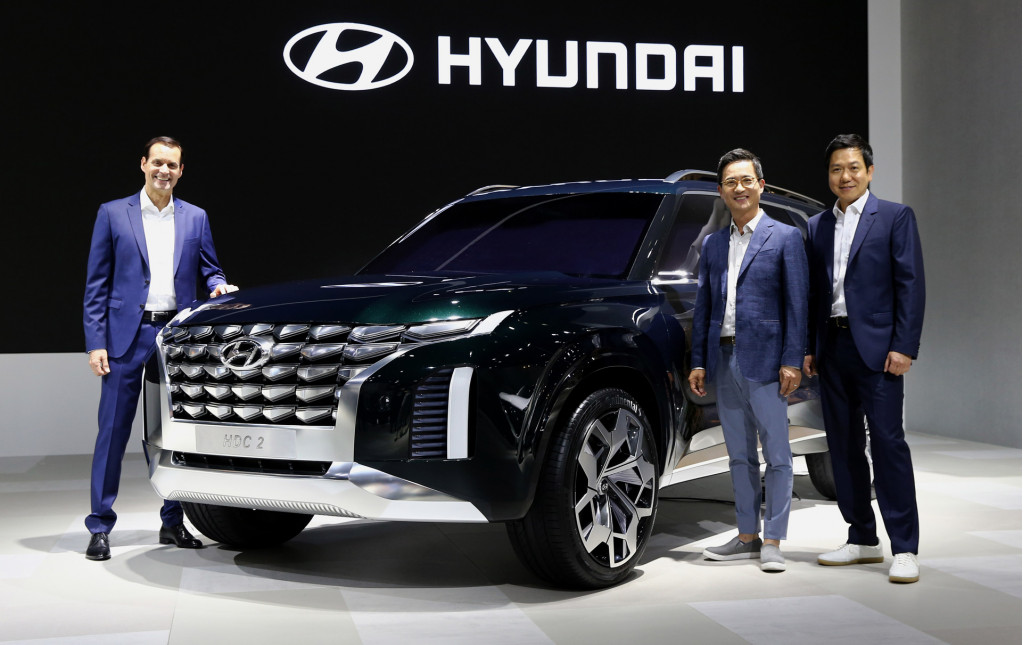
Hyundai Grandmaster concept
That the Palisade doesn’t look like a Santa Fe—or frankly anything else he’s done is the point. Hyundai’s future look will move past the sameness of the Elantra and Sonatas of today—it’ll move way past that. The Palisade’s blunt shapes and vertical elements are meant to look strong. Not like a brick in the wind—Donckerwolke says a square shape like a brick actually looks weak—but muscular.
It’s Donckerwolke’s plan to move the world around him.
In South Korea, nearly every car on the road is a Hyundai—the automaker’s market share hovers around 70 percent, far higher than GM’s domestic slice of about 15 percent in the U.S.
To say the cars that crowd the roadways in South Korea look the same is an understatement. They are the same.
By bending here, adding a crease there, Donckerwolke’s giving himself something to look at on the way in to work.
He freely admits that his idea for the Palisade was casting the Marlboro Man as a family dad. Rugged, independent, but with a honey-do list.
“(Crossovers are) trying to bring functionality, like a station wagon, but with a Marlboro cowboy flavor. It’s that ‘adventure’ flavor,” he says.
————
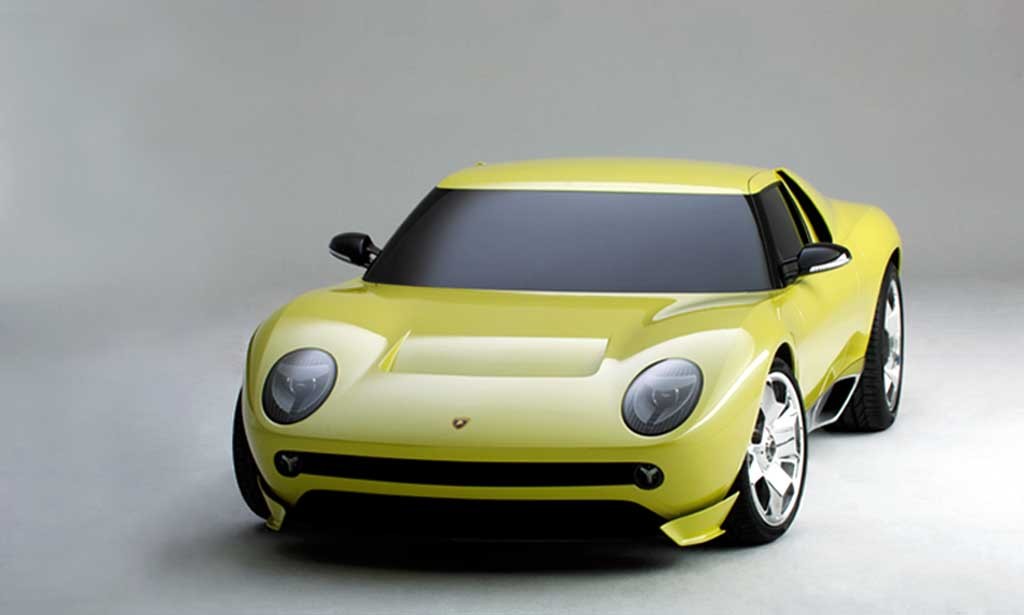
2006 Lamborghini Miura Concept
Daniel Cuffaro is department chairman at the Cleveland Institute of Arts’ Industrial Design school, which has turned out automotive design titans such as Jerry Hirschberg (1971 Buick Riviera), Joe Oros (the original Ford Mustang), Eric Stoddard (Chrysler Crossfire), and Ryan Nagode (current Ram trucks).
Cuffaro knows Donckerwolke’s work and calls his concept for a reimagined Lamborghini Miura released in 2006 along with Walter de Silva, “a great balance between heritage and contemporary design.
“(Luc’s) career path is amazing. The brands that he has worked with or been charged with are truly impressive and speaks to his talent and vision,” Cuffaro says.
He shares Donkerwolke’s vision that form and function aren’t incompatible.
“The ideal is form (and) function working in harmony…being of equal weight. However, one or the other may be a starting point. With the example of the 911 and Jeep, the starting point might be function, but the design team works to ‘merge’ these such that one does not dominate the other,” Cuffaro says.
“Form follows function is a great symbol, but it’s actually wrong. For me, form merged with function,” Donkerwolke says.
Back to the pure breeds.
“They’re unique in their DNA. They had to get other genes to be updated, in line with the markets. Nobody wants today a fully hardcore vehicle anymore,” Donckerwolke says.
Hardcore vehicles like the old Mini, Range Rover, or 911, may not be in the plans for automakers soon either.
There are a lot of really nice designs out there, but ‘new’ pure breeds are not common,” says Cuffaro. “It seems to me that some emerging EV brands are breaking from automotive conventions (Lucid Motors and Rivian, for example). I’m not certain that I would call these pure breeds, but they are starting to point to a design vocabulary where the primary functionality is user interaction, not housing the machinery of the vehicle.”
Even Donckerwolke’s extreme Essentia concept, with an impossibly wide and low stance, curvaceous body and impractical seating position was a compromise. How?
“It’s not a pure breed…it’s a Gran Turismo and that’s already a compromise,” he says. “The gentleman driver is already somebody that wants to go fast—with a tie.”
The 911, a car he loves, is a crossover now, too.
“Even sports cars are becoming more civilized…You should not have computers to compensate for your lack of ability to drive the car,” he says.
Pure breeds are elusive. Hard to define, hard to make, but even harder to get rid of. Donckerwolke has his sights set on making one—maybe.
“I wish I could.”
